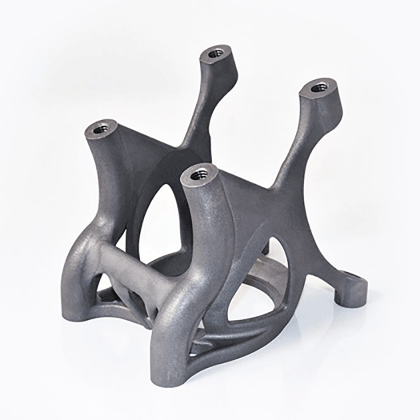When it comes to DMLS 3D printing, the choice of materials plays a crucial role in determining the quality, strength, and functionality of the final product. In this article, we will delve into the various materials used in DMLS 3D printing and explore their properties in detail.
The Importance of Material Selection
One of the key factors that sets DMLS 3D printing apart from traditional manufacturing methods is the wide range of materials that can be used. From metals like titanium and aluminum to high-performance polymers, the versatility of DMLS 3D printing allows for the creation of complex and intricate designs that would be impossible to achieve using conventional techniques.
Furthermore, the properties of the materials used in DMLS 3D printing can have a significant impact on the performance of the final product. For example, the strength, durability, and heat resistance of a metal part will depend on the specific alloy used, making material selection a critical consideration in the design and production process.
Metal Materials for DMLS 3D Printing
One of the most popular materials used in DMLS 3D printing is stainless steel. Known for its strength, corrosion resistance, and versatility, stainless steel is widely used in a variety of industries, including aerospace, automotive, and medical. Other metal materials commonly used in DMLS 3D printing include titanium, aluminum, and nickel-based alloys, each offering unique properties that make them suitable for different applications.
For example, titanium is prized for its high strength-to-weight ratio and biocompatibility, making it an ideal choice for medical implants and aerospace components. On the other hand, aluminum is valued for its lightweight and excellent thermal conductivity, making it well-suited for heat exchangers and other thermal management applications.
Polymer Materials for DMLS 3D Printing
In addition to metals, DMLS 3D printing also supports a wide range of polymer materials, each with its own set of properties and applications. For instance, nylon is a popular choice for its durability, flexibility, and chemical resistance, making it suitable for functional prototypes and end-use parts in various industries.
Other polymer materials used in DMLS 3D printing include polycarbonate, polypropylene, and TPU (thermoplastic polyurethane), each offering unique mechanical and thermal properties that cater to specific design requirements. Whether it's high-temperature resistance, impact strength, or flexibility, there is a polymer material suitable for virtually any application.
Understanding the Impact of Material Properties
Ultimately, the success of a DMLS 3D printing project hinges on the careful selection of materials and an in-depth understanding of their properties. By considering factors such as strength, durability, thermal conductivity, and chemical resistance, designers and engineers can optimize their designs for performance and functionality.
Furthermore, advancements in material science and additive manufacturing technology continue to expand the range of materials available for dmls 3d printing, opening up new possibilities for innovation and creativity. From exotic metal alloys to high-performance polymers, the future of DMLS 3D printing is bound to be shaped by the materials of tomorrow.

